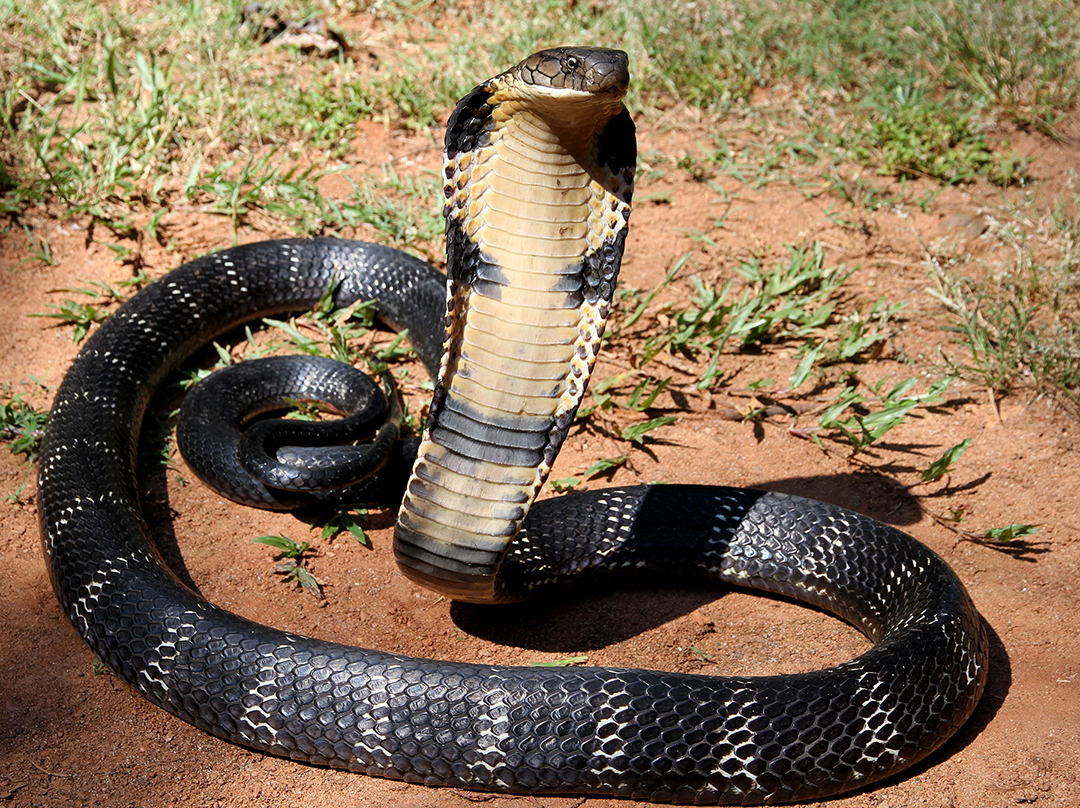Pythons
 Reticulated pythons (Python reticulatus) are the only pythons that inhabit the rainforests of the Philippines. The longest snake species in the world, reticulated pythons may reach more than 25 feet in length and weigh more than 300 pounds. Primarily nocturnal, reticulated pythons kill rats, birds, pigs and goats by constriction. Humans hunt reticulated pythons extensively throughout southeast Asia and use the large snakes for their meat and skins.
Reticulated pythons (Python reticulatus) are the only pythons that inhabit the rainforests of the Philippines. The longest snake species in the world, reticulated pythons may reach more than 25 feet in length and weigh more than 300 pounds. Primarily nocturnal, reticulated pythons kill rats, birds, pigs and goats by constriction. Humans hunt reticulated pythons extensively throughout southeast Asia and use the large snakes for their meat and skins.
Elapids
 The longest venomous snakes in the world -- king cobras (Ophiophagus hannah) -- inhabit the Philippines. Additionally, three “true” cobras live throughout the Philippines, including Northern Philippine cobras (Naja philippinensis), Southern Philippine cobras (N. samarensis) and equatorial spitting cobras (N. sumatrana). While king cobras primarily prey on snakes, the other cobras are generalists that include frogs, rodents and lizards in their diet as well.
The longest venomous snakes in the world -- king cobras (Ophiophagus hannah) -- inhabit the Philippines. Additionally, three “true” cobras live throughout the Philippines, including Northern Philippine cobras (Naja philippinensis), Southern Philippine cobras (N. samarensis) and equatorial spitting cobras (N. sumatrana). While king cobras primarily prey on snakes, the other cobras are generalists that include frogs, rodents and lizards in their diet as well.
Three coral snake species live in the Philippines, including the long-glanded coral snakes (Maticora interstinalis). With venom glands that are as long as one-third of the snake’s body, only a few closely related species have longer venom glands than long-glanded coral snakes do.
Additionally, 20 different sea snake and sea krait species swim in the waters surrounding the Philippines. Most are completely aquatic and give birth in the water, but the amphibious sea kraits (Laticauda sp.) venture onto dry ground to deposit eggs. Most sea snakes and kraits are extremely venomous, but very shy and unlikely to bite unless restrained or provoked.
Blind Snakes
About 14 blind snakes from the family Typhlopidae are native to the Philippines. However, because of the secretive nature of these snakes, scientists frequently document the presence of new species. Blind snakes are very small, harmless, burrowing creatures that subsist on termites, ants and their larvae. Blind snakes are named for their reduced, vestigial eyes.
Pit Vipers
Several venomous pit vipers live in the Philippines. Authorities debate the classification of the many forms native to the region, but all share a number of similarities. All are medium-sized arboreal snakes with large, folding fangs in the front of their mouth. Like most pit vipers, which use their thermoreceptive pits to locate warm-blooded prey, the pit vipers living in the Philippines are generally nocturnal. People often encourage the beautiful Wagler’s pit viper (Tropidolaemus wagleri) to live in temples and courtyards and consider its presence as a sign of good fortune.
Colubrids
 Over 100 colubrid species inhabit the Philippines. Red-tailed green rat snakes (Elaphe oxycephala) are semi-arboreal, constricting snakes that hunt rodents and birds. The banded wolf snake (Lycodon suncinctus) is a common, wide-ranging species that spends most of its time on the forest floor, feeding on small lizards. The Philippines are home to 10 species of reed snakes (Calamaria sp.), which spend their time underground, consuming worms and soft-bodied invertebrates. Several bronzeback (Dendrelaphis sp.) species live in the Philippines, including the largest representative of the genus, the striped bronzeback (Dendrelaphis caudolineatus), which reaches 5 feet in length. These diurnally active snakes hunt for lizards, frogs and birds in the trees.
Over 100 colubrid species inhabit the Philippines. Red-tailed green rat snakes (Elaphe oxycephala) are semi-arboreal, constricting snakes that hunt rodents and birds. The banded wolf snake (Lycodon suncinctus) is a common, wide-ranging species that spends most of its time on the forest floor, feeding on small lizards. The Philippines are home to 10 species of reed snakes (Calamaria sp.), which spend their time underground, consuming worms and soft-bodied invertebrates. Several bronzeback (Dendrelaphis sp.) species live in the Philippines, including the largest representative of the genus, the striped bronzeback (Dendrelaphis caudolineatus), which reaches 5 feet in length. These diurnally active snakes hunt for lizards, frogs and birds in the trees.Eastern Coral Snake
The eastern coral snake (Micrurus fulvius), another venomous snake, is the only Georgia snake from the Elapidae family. Unlike pit vipers, the venomous eastern corals have round-shaped pupils. Eastern corals differ from Georgia's other venomous snakes by the shorter length of their fangs.
When these snakes bite, they do not control the amount of venom they inject. These snakes have red-yellow-black patterns on their skin. Eastern coral snakes spend most of their time underneath leaves or logs and do not often emerge into open areas, according to the University of Georgia Museum of Natural
King Snakes
/5682147827_eee5f50bf9_o-56a2bcfe5f9b58b7d0cdf926.jpg) King snakes are nonvenomous snakes that belong to the Lampropeltis genus. Three king snakes live in Georgia: the milk snake, mole king snake and eastern king snake. A subspecies of the milk snake, the scarlet king snake, also lives in Georgia. King snakes are so named because they eat other snakes, including venomous species.
King snakes are nonvenomous snakes that belong to the Lampropeltis genus. Three king snakes live in Georgia: the milk snake, mole king snake and eastern king snake. A subspecies of the milk snake, the scarlet king snake, also lives in Georgia. King snakes are so named because they eat other snakes, including venomous species.
These snakes are immune to the venom of the eastern coral snake and pit viper. The longest king snake in Georgia is the eastern king snake, which reaches 4 feet long. Humans mistake milk snakes and scarlet king snakes for eastern corals because of their similar skin patterns. However, milk snakes and scarlet king snakes have red-black-yellow or -white patterns.
Water Snakes
Georgia is home to five nonvenomous water snakes, all members the Nerodia genus: banded, brown, redbelly, green and northern. Water snakes (even the baby snakes in Georgia) are able to dive and swim underwater. Northern and banded water snakes have brown markings on their skin, which give them a striking resemblance to copperheads or cottonmouths. The eyes of brown water snakes are almost on the top of their heads.
Oak Snake

Oak snakes are a bit rarer in terms of Georgia snake identification as they're mainly found in Florida and other neighboring states. However, you can find oak snakes in southern Georgia.
Named for their skin camouflaging with oak trees, these snakes average 4-5 feet in length with the ability to grow up to 7 feet long. If you see one, you probably don't need to worry: they're known as shy, secretive, and non-aggressive.
If they do bite, they don't have any venom so you don't need to worry about that. Eating mostly small lizards and frogs, they also can eat insects, squirrels, rats and mice. These snakes can live up to 20 years with an average lifespan of 12 years.



No comments:
Post a Comment